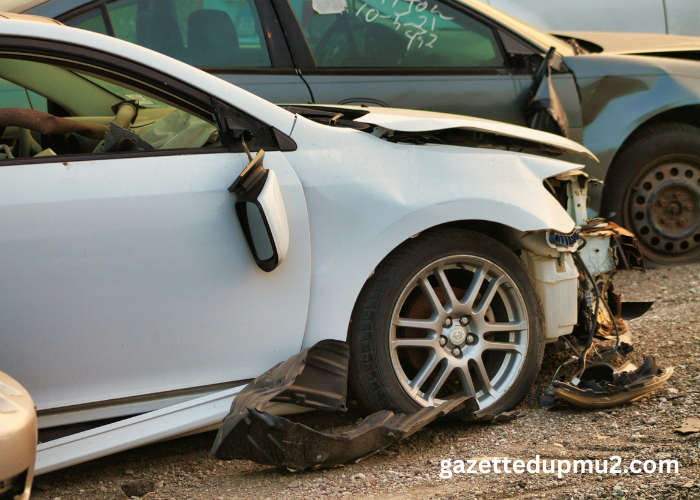Did you know that the rate of fatal car crashes in the US in 2022 is nearly 16 deaths per 100,000 vehicles? In North Carolina alone, there were approximately 284,157 car accidents in 2023. These statistics highlight that accidents continue to take the lives of people on the roads.
If you’re in a car crash, the first thing you should do is get medical help for your injuries. Then, you can start figuring out how much damage you have suffered and how to hold the responsible party accountable.
But how are you going to do that, though? Knowing how much your losses are worth is necessary for you to be able to negotiate a fair compensation. Wilmington car accident lawyers emphasize that without a lawyer, you may not realize the extent of the full amount of the compensation you deserve. It’s always a must to consult a skilled and experienced lawyer to guide you beyond insurance matters.
Here’s what you should do and not do after a car accident:
Seek Medical attention.
Even if you feel fine at the scene of the accident, get yourself checked by a medical professional. According to wrongful death lawyer Justin L. Ward, some injuries, such as whiplash or internal bleeding, may not show immediate symptoms but can have serious consequences if left untreated.
Seek medical attention right away to make sure that any injuries are properly diagnosed and treated, and it also creates a record of your injuries for insurance purposes.
When seeking medical attention, be thorough and honest with your healthcare provider. Describe all your symptoms, even if they seem minor, as they could be indicative of a more serious injury. Make sure to follow any treatment plans or recommendations given by your healthcare provider. Failure to do so couldn’t only hinder your recovery but also affect any potential insurance claims you may file.
Assess the scene
When you have not been injured or the crash is a minor one, you can assess the scene of a car accident by calmly and quickly surveying the area for any immediate dangers or potential hazards. Look around to identify any potential risks, such as leaking fuel, broken glass, or live wires. Make sure to stay away from these hazards to guarantee your safety.
Next, check if anyone involved in the accident requires immediate medical attention. Look for signs of injuries, like bleeding or unconsciousness. If necessary, call emergency services right away and provide them with accurate information about the location and nature of the accident.
Be aware of any traffic or oncoming vehicles. Make sure that everyone involved is out of harm’s way, and if necessary, direct traffic or set up warning signals to prevent further accidents.
Gathering the contact information of witnesses, if any. Their account can be important for future investigations or insurance claims. If possible, ask them to remain at the scene until law enforcement arrives.
Exchange Information
The next step is to exchange information with the other parties involved. This is important for insurance purposes and to make sure that all necessary details are obtained.
Make sure to exchange contact information with the other driver(s) involved in the accident. This should include names, phone numbers, and addresses. Exchange insurance information, including the name of the insurance company and the policy number. Gather details about the other vehicle(s) involved, such as the make, model, and license plate number.
Remain calm and courteous during this process, as tensions may be running high. Avoid discussing fault or admitting guilt, as this can complicate matters later on.
This information exchange will help facilitate the claims process and ensure that all parties involved are held accountable.
Document the Incident
Now that you have exchanged information with the other parties involved in the car accident, document the incident. Start by taking photographs of the accident scene, including the damage to all vehicles involved, any road conditions, and any relevant traffic signs or signals.
Write down a detailed account of what happened, including the date, time, and location of the accident, as well as the weather conditions at the time. Include all relevant details, such as the actions of the other driver(s), any witnesses present, and any injuries sustained. Keep track of any medical treatment you receive and any expenses incurred as a result of the accident.
Preserve any physical evidence, such as damaged clothing or personal belongings, and keep a record of any conversations or statements made by the other parties involved.
Avoid Making Admissions
After an accident, it’s understandable to feel shaken and overwhelmed. Remember that anything you say at the scene of the accident can be used against you later on. Avoid making any admissions of guilt or responsibility, even if you believe you may have been at fault. Admitting fault can have serious legal consequences.
Instead of making admissions, focus on gathering information and documenting the accident. Exchange contact and insurance information with the other parties involved, and gather contact information from any witnesses. These steps can help strengthen your case later on without jeopardizing your legal position.
It is also important to be cautious when speaking with insurance adjusters. They may try to pressure you into admitting fault or downplaying your injuries. Remember that you have the right to consult with an attorney before providing any statements or signing any documents.
Conclusion
Being involved in a car accident can be a traumatic experience, but knowing the right steps to take can help you handle the aftermath more effectively. Consulting with a skilled car accident lawyer can ensure you receive the full compensation you deserve.
By following these steps, you can protect your rights and work towards a fair resolution.





